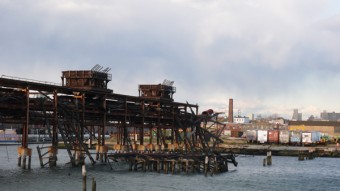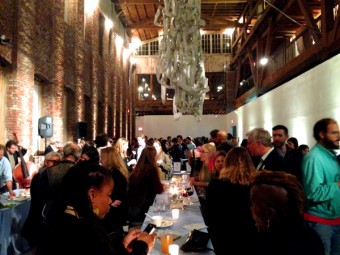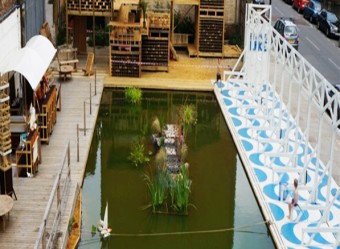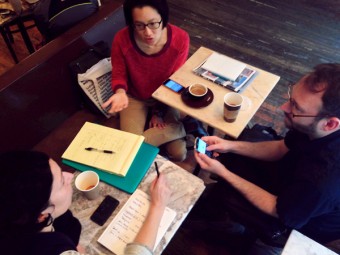Design
Red Hook
Posted By:
Admin
Monday 11 November 2013
ANNIVERSARY LAUNCHING PAD, OCTOBER 2013
AIGA’s Design/Relief initiative has officially launched, and in Red Hook, community cohesion is especially palpable in light of Sandy’s one-year anniversary. Though, Red Hook is a neighborhood of many communities experiencing change, commercialization and a great deal of outsider attention, there is a sense of commitment to community that appears to have strengthened since facing the storm.
Red Hook Harbor seen from the ferry. Photo: Laetitia Wolff
At the 7th annual Taste of Red Hook benefiting the Red Hook Initiative (RHI), Founder & Executive Director Jill Eisenhard poignantly noted that when Sandy struck “Red Hook did what Red Hook does” and collectively took action. The event itself reflected a-coming-together of the neighborhood’s different communities, where local chefs and entrepreneurs (new and old) showcased Red Hook’s culinary scene in support of the youths and residents advocated for by RHI.
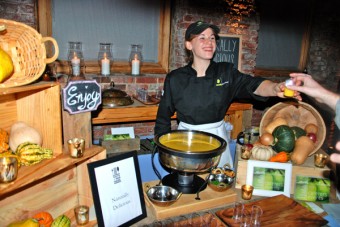
Taste of Red Hook. Photo: David Al-Ibrahim
Successful programing and RHI projects were also highlighted, such as the “wi-fi mesh network” that is being implemented by the Digital Stewards, young adults from Red Hook ages 19-24, to provide free internet access throughout Red Hook. (Of course, the food was fabulous.)
Taste of Red Hook at Pioneer Works. Photo: David Al-Ibrahim
However, Red Hook’s increasing popularity as subject of study and grant attention since Sandy has been a challenge. At Design/Relief kick-off meeting, RHI’s Jill Eisenhard explained how the influx of researchers, urban planning projects and aid programs is wearing on residents and local organizations – likening Red Hook to a Petri dish. The other Red Hook community stakeholders present expressed similar concerns, noting a sense of “fatigue” among those trying to balance engaging new projects while managing their own initiatives.
As a new project in Red Hook, as well as a new kind of community-focused design program, this notion of fatigue presents interesting challenges for Design/Relief as we explore new approaches to creative placemaking and what it means to serve a community.
Days following the Taste of Red Hook, Design/Relief hosted the Tate Modern’s Donald Hyslop to illuminate his own creative placemaking perspectives at a neighborhood “art and innovation” center called Pioneer Works. As Head of Regeneration and Community Partnerships, Hyslop is focused on the intersection of museum and city, business and people. Hyslop illuminated the importance of bringing aspects of the museum out into the community to make content more accessible, create links with residents, and provoke dialogue. Partnerships and dialogue, Hyslop emphasized, “are how you make creative places.”
The Lake, Courtesy of EXYZT Architects and Lake Estates, London
The very existence of Mr. Hyslop’s position and department at the Tate speak to the evolution of design thinking for social good and the still loosely defined concept of “creative placemaking.” The Tate Modern, now in another phase of expansion, has had a significant role in radically changing the fabric of its Bankside neighborhood, creating a type of arts district that continues to draw millions annually. Drawing parallels between Red Hook and the Bankside, Hyslop proposed that urban development, community engagement and creative placemaking should be approached through a framework as opposed to a master-plan, a model that can adapt to the communities real and often changing needs.
Red Hook team thinking at THINK. Photo: David Al-Ibrahim
As for team Red Hook, we are in the process of identifying key stakeholders and potential partners, while working to develop efficient workshops that minimize fatigue and highlight areas where the neighborhood’s different communities intersect.
